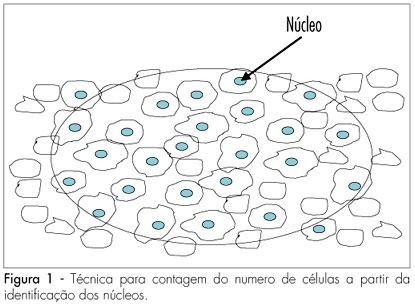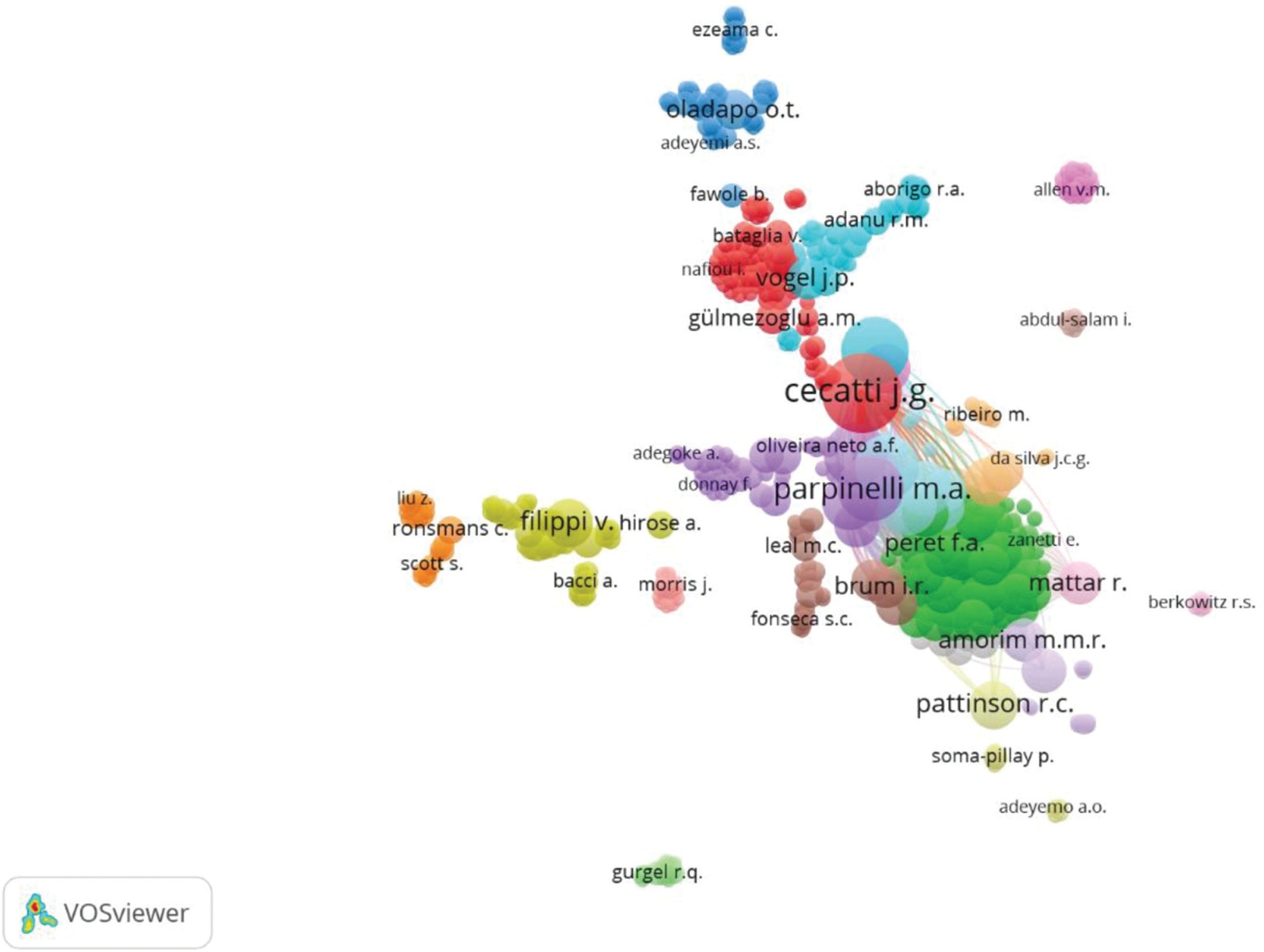Summary
Revista Brasileira de Ginecologia e Obstetrícia. 2005;27(10):613-618
DOI 10.1590/S0100-72032005001000008
PURPOSE: to evaluate the results of 14 cases of laparoscopic surgical treatment of patients with deep endometriosis of the rectovaginal septum in the Sector of Gynecological Endoscopy of the 'Hospital do Servidor Público Estadual "Francisco Morato de Oliveira"'. METHODS: a retrospective analysis was accomplished with data from the records, associated with postoperative evaluation of the patients operated between February 2002 and February 2004. The patients' age varied from 33 to 44 years, with a mean of 38.4. The parity ranged from 0 to 3, with a mean of 1.1. The main preoperative symptoms were: dysmenorrhea in 14 (100%), deep dyspareunia in 12 (85.7%), non-ciclic pelvic pain in 10 (71.4%), pain at defecation in two (14.3%), rectal bleeding in two (14.3%), and infertility in two (14.3%). The plasma level of CA-125 ranged from 3.6 to 100.3 U/mL, with a mean of 52.9 U/mL. RESULTS: the histological examination of the lesions of the rectovaginal septum was compatible with endometriosis in nine (64.3%) patients. Concerning painful symptoms, there was total regression in seven (50%) patients, partial regression (more than 80% relief) in two (14.3%), no improvement in four (28.6%), and worsening in one (7.1%). The incidence of complications was 14.3%: a ureter lesion associated with lesion of the sigmoid and a lesion of the rectum diagnosed on the 8th postoperative day. Conclusion: it can be concluded that endometriosis of the rectovaginal septum can be treated through laparoscopic surgery with low morbidity, leading to a complete or almost complete relief of the symptoms in most of the patients.
Summary
Revista Brasileira de Ginecologia e Obstetrícia. 2004;26(8):613-617
DOI 10.1590/S0100-72032004000800004
OBJECTIVE: the aim of the present study was to verify whether there is a correlation between the prevalence of the polymorphism in the progesterone receptor gene named PROGINS and pelvic endometriosis at different stages. METHODS: a case-control study carried out from November 2003 to May 2004. The genotypes of 104 women were analyzed 66 women had had surgically confirmed endometriosis (26 women at stages I-II and 40 at stages III-IV), and 38 were healthy women. The 306-base pair Alu insertion polymorphism in the intron G of the progesterone receptor gene was detected by polymerase chain reaction and analyzed on 2% agarose gel stained with ethidium bromide. ANOVA analysis was performed in order to make comparisons between among the studied groups. RESULTS: the groups of women with endometriosis stages I-II (EndoI group) and stages III-IV (EndoII group) showed statistically significant increased incidence of PROGINS polymorphic allele as compared with the control group: 27% in the EndoI group, 38% in EndoII and 18% in the control group (p < 0.001. In the analyses, a high frequency of the PROGINS insertion was observed in women with endometriosis as compared to healthy women, disregarding the clinical stage of the disease (p = 0.0385). CONCLUSION: there is a significant statistical association between the PROGINS polymorphism and pelvic endometriosis.

Summary
Revista Brasileira de Ginecologia e Obstetrícia. 2007;29(12):614-618
DOI 10.1590/S0100-72032007001200003
PURPOSE: to determine the variation of the number of ovarian follicles during fetal life. METHODS: twelve ovaries donated for research were included in our study, nine from fetuses and three from newborn babies who died in the first hour after being delivered with 39 weeks of pregnancy. Fetal age was confirmed both by the last menstrual period of the woman and by ultrasonography. Ovaries were fixed in formaldehyde, included in paraffin and serially sliced at 7 mm. At every 50 cuts, the obtained material was haematoxilin-eosin stained and evaluated with an optical microscope (400 X). The follicles were counted in ten different regions of the ovarian cortex, each region with an area of 625 mm². The presence of a nucleus was considered the parameter for counting. Follicular density, per 1 mm³ was calculated using the formula Nt=(No x St x t)/do, where Nt is the number of follicles; No is the mean number of follicles in 1 mm²; St is the total number of slices in 1 mm³; t is the slice thickness and do is the nuclei mean diameter. RESULTS: the gestational age of fetuses ranged from 24 to 39 weeks. The number of follicles per 0.25 mm² ranged from 10.9 ± 4.8 in a newborn to 34.7 ± 10.6 in another newborn. Among the fetuses, the least value was obtained in a 36 week-old fetus (11.1 ± 6.2) and the highest in a 28 week-old fetus (25.3 ± 9.6). The total number of slices per ovary ranged from six to 13, corresponding to follicles counted in areas from 15 to 32.5 mm². The total number of follicles ranged from 500,000 at the age of 22 weeks to > 1,000,000 at the age of 39 weeks. CONCLUSIONS: our results demonstrate different (increasing) densities of ovarian follicles along the gestational period, providing more knowledge about this still not well-known subject.

Summary
Revista Brasileira de Ginecologia e Obstetrícia. 2003;25(8):614-614
DOI 10.1590/S0100-72032003000800016
Summary
Revista Brasileira de Ginecologia e Obstetrícia. 2003;25(8):614-615
DOI 10.1590/S0100-72032003000800017
Summary
Revista Brasileira de Ginecologia e Obstetrícia. 2022;44(6):614-620
The impact of Chlamydia trachomatis (CT) infection on female’s fertility is not completely established yet, since the level of evidence associating these factors is still weak. Hence, the goal of the present review is to contribute to a better elucidation of this matter. The electronic database chosen was the Medline/PubMed, with the last survey on May 11, 2021. Publication date was used as a filter, with the previous 5 years having been selected. The following describers were used: chlamydia trachomatis AND infertility; chlamydia trachomatis AND tubal alteration AND infertility; chlamydia AND low pregnancy rates. From the 322 studies screened, 293 that failed to meet our eligibility criteria were excluded. Subsequently, we removed seven studies for not having the possible correlation between CT infections and female infertility as its main focus, and three for being about sexually transmitted infections (STIs) in general. Moreover, two studies designed as reviews were also excluded. Ergo, we included 17 studies in our qualitative analysis. The authors conducted research individually and analyzed carefully the studies selected. As we retrieved the information needed for our study through reading the texts, no contact was made with the authors of the studies selected. This systematic review corroborates the hypothesis that CT infection potentiates female infertility, as 76.47% of the included studies found a positive correlation between them. We conclude that there is an important association between CT infection and female infertility. Ergo, making CT screening part of the infertility investigation routine is relevant and has a reasonable justification.

Summary
Revista Brasileira de Ginecologia e Obstetrícia. 2020;42(10):614-620
To evaluate the global productivity regarding original articles on maternal near-miss (MNM).
We conducted a bibliometric analysis of original articles published from 2008 to November 2019 in the journals indexed in the Scopus database. The averages of the number of articles by author, of the number of authors by article, of the number of citations by article, and the total number of documents with one or more authors were obtained. An analysis of the co-citation of authors and a co-occurrence analysis of the terms included in the titles and abstracts were performed and were presented as network visualization maps.
A total of 326 original articles were analyzed. There was an increase in the number of articles (p < 0.001; average annual growth rate = 12.54%;). A total of 1,399 authors, an average number of articles per author of 4.29, with an index of authors per document of 0.23, and an index of co-authors per document of 8.16 were identified. A total of 85 countries contributed with original articles on MNM. Among the top ten countries regarding the contribution of articles, five were low and middle-income countries (LMICs). Brazil had the highest volume of production (31.1%;), followed by the US (11.5%;). Terms related to countries and the measurement of the rates and cases of MNM and the associated factors were found in recent years in the analysis of the co-occurrence of terms.
There was an increase in the production of original articles on MNM, with a significant participation of authors and institutions from LMICs, which reveals a growing interest in the use of MNM indicators to improve the quality of maternal health care.

Summary
Revista Brasileira de Ginecologia e Obstetrícia. 2018;40(10):614-619
To evaluate the long-term subjective cure rate of the transobturator sling, including an analysis of the risk factors and of the impact of increased surgical experience on the results.
A retrospective cohort study of women who underwent transobturator sling surgery from 2005 to 2011 was conducted. Patients were evaluated by a telephone survey using the International Consultation on Incontinence Questionnaire-Short Form (ICIQ-SF) and by subjective questions regarding satisfaction. An ICIQ-SF score of 0 was considered a cure. The crude and adjusted odds ratios and 95% confidence intervals were estimated in univariate and multivariate logistic regression models to identify risk factors for surgical failure. Differences with p < 0.05 were considered significant.
In total, 152 (70.6%) patients answered the questionnaire. The median follow-up period was 87 months. The urodynamic diagnosis was stress urinary incontinence in 144 patients (94.7%), and mixed urinary incontinence in 8 (5.3%) patients. Complications occurred in 25 (16%) patients. The ICQ-SF results indicated that 99 (65.10%) patients could be considered cured (ICIQ-SF score = 0). Regarding the degree of satisfaction, 101 (66%) considered themselves cured, 43 (28%) considered themselves improved, 7 (4.6%) considered themselves unchanged, and one reported worsening of the incontinence. After the univariate and multivariate analyses, the primary risk factor for surgical failure was the presence of urgency (p < 0.001).
The transobturator sling is effective, with a low rate of complications and a high long-term satisfaction rate. The risk factors for failure were the presence of urgency and patient age. The increased experience of the surgeon was not a factor that influenced the rate of complications.
